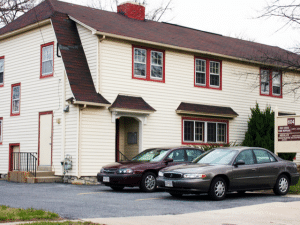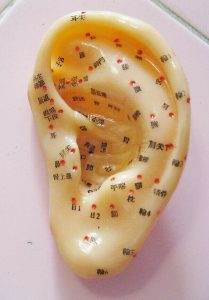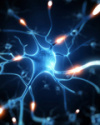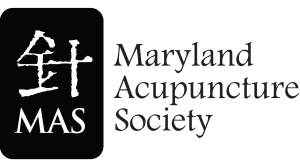- Call for a FREE Consultation
410-984-3700 - Unsubscribe at any time.

-
 Jean Donati Acupuncture604 E. Joppa RD
Jean Donati Acupuncture604 E. Joppa RD
Towson, MD 21286410-984-3700
Migraines
Treatment of Neurological Disorders with Acupuncture
Treatment of Neurological Disorders with Acupuncture
A neurological disorder refers to a problem with the nervous system, a complex, sophisticated system that regulates and coordinates the body’s activities. Nerve pain can arise from trauma, inflammation, stroke, disease, infection, nerve degeneration, exposure to toxic chemicals, and nutrient deficiencies.
Nerve pain is usually a sharp, shooting pain or a constant burning sensation. Typically occurring in the same location with each episode, it can often be traced along the nerve pathway. Sometimes weakness or impaired function in the affected area occurs, and the skin may be either overly sensitive or numb.
Acupuncture can provide symptom relief from some neurological disorders, including:
Amyotrophic Lateral Sclerosis (ALS) — ALS is an irreversible neurological disease that destroys the nerve cells that invigorate the muscles.
Carpal Tunnel Syndrome — Also known as median nerve entrapment, it occurs when swelling or irritation of the nerve or tendons in the carpal tunnel results in pressure on the median nerve.
Headaches — Headaches that can be treated with acupuncture include migraines, tension headaches, headaches occurring around the menstrual cycle, sinus headaches and stress-related headaches.
Myasthenia Gravis — This is a neuromuscular disorder causing muscles under voluntary control to tire and become easily fatigued.
Peripheral Neuropathy — This presents as damage to the peripheral nervous system, which transmits information from the brain and spinal cord to every other part of the body. This kind of neuropathy can be caused by diabetes and often affects the feet.
Trigeminal Neuralgia — This presents as facial pain and is sometimes called Tic Douloureux. It affects the trigeminal nerve, which is responsible for impulses of touch, pain, pressure, and temperature sent to the brain from the face, jaw, and gums.
Acupuncture and Chinese medicine have been found effective as conjunctive therapy for several neurological disorders such as Parkinson’s disease and in treating pain and inflammation.
If you or someone you know is suffering from a neurological disorder or nerve pain, contact us today for more information or to schedule an appointment!
Author: Jean Donati PA-C, M.Ac, L.Ac.
Jean Donati is a Nationally Certified Physician Assistant, Licensed Acupuncturist and owner of Jean Donati Acupuncture. She specializes in Traditional Five Element Acupuncture, and Facial Rejuvenation for physical, mental and emotional concerns.
Treatment of Neurological Disorders with Acupuncture

Treatment of Neurological Disorders with AcupunctureA neurological disorder refers to a problem with the nervous system, a complex, sophisticated system that regulates and coordinates the body’s activities. Nerve pain can arise from trauma, inflammation, stroke, disease, infection, nerve degeneration, exposure to toxic chemicals, and nutrient deficiencies.Nerve pain is usually a sharp, shooting pain or a constant burning sensation. Typically occurring in the same location with each episode, it can often be traced along the nerve pathway. Sometimes weakness or impaired function in the affected area occurs, and the skin may be either overly sensitive or numb.Acupuncture can provide symptom relief from some neurological disorders, including:Amyotrophic Lateral Sclerosis (ALS) — ALS is an irreversible neurological disease that destroys the nerve cells that invigorate the muscles.Carpal Tunnel Syndrome — Also known as median nerve entrapment, it occurs when swelling or irritation of the nerve or tendons in the carpal tunnel results in pressure on the median nerve.Headaches — Headaches that can be treated with acupuncture include migraines, tension headaches, headaches occurring around the menstrual cycle, sinus headaches and stress-related headaches.Myasthenia Gravis — This is a neuromuscular disorder causing muscles under voluntary control to tire and become easily fatigued.Peripheral Neuropathy — This presents as damage to the peripheral nervous system, which transmits information from the brain and spinal cord to every other part of the body. This kind of neuropathy can be caused by diabetes and often affects the feet.Trigeminal Neuralgia — This presents as facial pain and is sometimes called Tic Douloureux. It affects the trigeminal nerve, which is responsible for impulses of touch, pain, pressure, and temperature sent to the brain from the face, jaw, and gums.Acupuncture and Chinese medicine have been found effective as conjunctive therapy for several neurological disorders such as Parkinson’s disease and in treating pain and inflammation.If you or someone you know is suffering from a neurological disorder or nerve pain, contact us today for more information or to schedule an appointment! Study Finds Acupuncture Effective at Treating Parkinson’s DiseaseA 2017 meta-analysis published in the journal Medicine set out to discover if acupuncture alone or acupuncture plus conventional treatment could mitigate the symptoms of Parkinson’s disease. Conventional treatment for Parkinson’s disease involves the use of the pharmaceutical drug Levodopa, but long-term use can cause mild to serious complications.After conducting their meta-analysis, the researchers concluded that acupuncture performed better than conventional treatment alone. Additionally, the combination of acupuncture with conventional treatment produced outstanding results when compared to just conventional treatment.Even more promising was the conclusion that acupuncture could provide relief for symptoms of early-stage Parkinson’s Disease, before the onset of drug therapy.Source: Lee, S.-H., & Lim, S. (2017). Clinical effectiveness of acupuncture on Parkinson disease: A PRISMA-compliant systematic review and meta-analysis. Medicine, 96(3), e5836. http://doi.org/10.1097/MD.0000000000005836 https://www.ncbi.nlm.nih.gov/pmc/articles/PMC5279085/ An Adjunctive Therapy for Multiple SclerosisMultiple sclerosis is an autoimmune disease that progressively damages the central nervous system. This happens due to the wearing away of the myelin sheath, a protective layer encasing the nerves. Some patients initially experience strong symptoms which suddenly disappear as the disease enters a period of remission. Others may experience a more insidious process wherein mild symptoms develop slowly over time but ultimately increase in severity.There is promising evidence that use of acupuncture and Chinese medicine as an adjunctive therapy can help mitigate symptoms and some complications of multiple sclerosis, including depression, problems thinking clearly and emotional instability.An article called “Acupuncture and Multiple Sclerosis: A Review of the Evidence,” was featured in the journal Evidence-based Complementary and Alternative Medicine, volume 2014. In this article, the authors assessed the validity of using acupuncture and Oriental medicine to treat symptoms of multiple sclerosis. To do this, the researchers reviewed many scientific studies on the subject to reach their conclusions.Researchers demonstrated that remyelination, repair of the damaged myelin sheath, occurred in a significant amount of study participants. The article also showed potential in regards to treating the mental and emotional challenges faced by patients with multiple sclerosis were measured and shown to improve — including subjective feelings such as depression and the ability of the patient to handle their illness. Relief from Myasthenia Gravis SymptomsMyasthenia gravis is a neuromuscular disorder that causes muscles under voluntary control to tire and become easily fatigued. More than half of those diagnosed with myasthenia gravis have eye problems as their first symptoms, including droopy eyelids (ptosis) and double-vision (diplopia). However, roughly 15 percent of sufferers report that their first symptoms started in the face or throat muscles.Someone with difficulties with the face or throat muscles may experience altered speech, limited facial expressions, and difficulty chewing and swallowing. The most severe symptom is called a ‘myasthenia crisis,’ in which the muscles used for breathing no longer function. This is a life-threatening condition, and emergency medical help is required immediately.As myasthenia gravis may affect any muscle under voluntary control, weakness could occur in other areas besides the face and throat. The arms generally are more affected than the legs, and symptoms may present in the hands and feet, although this is not as common.The exact cause of this condition is unknown, but researchers have learned that the disease prompts the immune system to block signals from the nerves to the muscles. There is also evidence that a protein that helps the muscles receive messages is prevented from doing so. It is also believed genetics may play a role.Acupuncture and Chinese medicine can support the treatment you receive from your primary care provider. As this disease is complex, all the things that bother you are reviewed, not just the signs and symptoms specifically related to the disease.If you or someone you know is suffering from a neurological disorder, contact us today for more information or to schedule an appointment! 410-984-3700 Author: Jean Donati PA-C, M.Ac, L.Ac. Jean Donati is a Nationally Certified Physician Assistant, Licensed Acupuncturist and owner of Jean Donati Acupuncture. She specializes in Traditional Five Element Acupuncture, and Facial Rejuvenation for physical, mental and emotional concerns. |
In This Issue
Amyotrophic Lateral Sclerosis (ALS) Symptom ReliefAmyotrophic lateral sclerosis (ALS) is an irreversible neurological disease that destroys the nerve cells, or neurons, that invigorate our muscles.Neurons are found in the brain and spinal cord, which comprise the central nervous system (CNS).As these cells weaken and wither, so do the muscles associated with them. Ultimately, this leads to a paralysis of those muscles.Early warning symptoms of the disease include weakness and fatigue of the arms or legs, and sometimes difficulty with speaking clearly.Other symptoms that may appear in early stages of ALS include:
In later stages of the disease, more severe symptoms reveal themselves.The muscles responsible for breathing, swallowing, and moving the body deteriorate to the point where they can no longer function.There is no known cure as of yet. The causes of ALS are not well understood, but it is accepted that genetics and chemical imbalances within the brain may play a role in the disease’s development.Acupuncture and Chinese medicine can assist in managing the symptoms of ALS, including muscle weakness and cramping, fatigue, and emotional issues.According to acupuncture and Chinese medicine, the kidneys are responsible for the production and control of a vital substance called marrow, which produces essential components that make up a healthy central nervous system.The brain is considered a repository for marrow, and is thus termed the Sea of Marrow. When the kidneys are deficient, this condition can negatively impact the central nervous system.When kidney deficiency occurs, it is important to nourish and revitalize them, so they can in turn help nourish and revitalize the brain. |
Health Benefits of Acupuncture and Yoga
The Health Benefits of Acupuncture and Yoga
 Acupuncture is an ancient healing technique originating in China over 5000 years ago. It is the process of moving qi (chee) or energy, in the body to decrease pain, facilitate health, wellness, and allow the body to heal itself. Disruption of qi energy is responsible for pain and illness in the body. By using certain acupuncture points, this energy is allowed to move freely and decrease pain and improve health.
Acupuncture is an ancient healing technique originating in China over 5000 years ago. It is the process of moving qi (chee) or energy, in the body to decrease pain, facilitate health, wellness, and allow the body to heal itself. Disruption of qi energy is responsible for pain and illness in the body. By using certain acupuncture points, this energy is allowed to move freely and decrease pain and improve health.
The practice of yoga can be traced back to Northern India 5000 years ago. It incorporates body postures, meditation, breathing and relaxation techniques all dedicated to moving prana or energy.
Acupuncture and yoga share the philosophy of connecting the body, mind, and spirit. Through the practice of acupuncture and yoga, you can experience many health benefits.
According to Johns Hopkins Medicine the benefits of acupuncture and yoga include….
*Pain relief, in particular, improving back pain.
*Easing arthritis symptoms.
*Benefiting heart health
*Relaxation for improved sleep
*Increased energy, brighter moods and mental clarity.
*Stress relief
Both and acupuncture and yoga benefit the whole person by enhancing health of multiple body systems and increasing the sense of well-being.
The World Health Organization (WHO) recognizes acupuncture to be helpful for many conditions affecting the body, mind, and spirit. These include pain, stress, nausea and vomiting, headache and sciatica, plus many more medical conditions.
Come enjoy Acupuncture with Jean Donati Acupuncture in Towson, MD., and Yoga with Janet. Your body will thank you for it.
Schedule an acupuncture appointment with Jean Donati Acupuncture in Towson, MD here https://www.East2WestMedicine.com
Schedule a virtual yoga class with Yoga with Janet here https://www.yogawithjanet.yoga/
Notes:
https://www.medicalnewstoday.com/articles/286745
https://www.hopkinsmedicine.org/health/wellness-and-prevention/9-benefits-of-yoga
https://holistic-health.org.uk/acupuncture-evidence-project-deeper-look/
https://www.medicalnewstoday.com/articles/156488#what-is-acupuncture
Author: Jean Donati PA-C, M.Ac, L.Ac.
Jean Donati is a Nationally Certified Physician Assistant, Licensed Acupuncturist and owner of Jean Donati Acupuncture. She specializes in Traditional Five Element Acupuncture, and Facial Rejuvenation for physical, mental and emotional concerns.
Auricular Acupuncture…With or Without Needles



Are you interested in the benefits of Acupuncture but have a fear of needles?
Auricular Acupuncture may be just what the doctor ordered! Auricular acupuncture is acupuncture that focuses on acupuncture points in your ears.
It involves either the use of small hair thin needles or the use of vaccaria ear seeds (no needles) at specific points along the pathways of energy in the body called meridians.
According to Traditional Chinese Medicine (TCM), a blocked or disrupted flow of energy (qi) can have a negative effect on your physical and mental health. Acupuncture aims to restore the flow of qi by resolving any blockages or disruption thus resolving the symptom or negative effect to you physical or mental health.
There are more than 200 acupuncture points in the ear. Auricular Acupuncture can be used for a wide range of conditions, and it is especially useful to relieve pain, calm the mind and treat withdrawal symptoms from addictions. But that’s not all…. Auricular acupuncture can treat literally hundreds of conditions. All types of physical pain (headaches, neck pain, back pain, sciatica, arthritis, fibromyalgia, sports injuries, abdominal pain), Mood and Emotions (Anxiety, stress, depression, PTSD, insomnia, ADD, ADHD). Even More (Weight loss, PMS, tinnitus, TMJ, Vertigo, Circulation, Allergies ….
Some conditions most commonly treated with auricular acupuncture include:
- Stress and anxiety
- Chronic and acute pain
- Nausea
- Insomnia/fatigue
- Digestive disorders
- Motion Sickness, Dizziness, vertigo
- Smoking cessation
- Weight loss
- Headaches, including migraines
- Focus and memory problems
- Symptoms of menopause/ postpartum depression
- Infertility, low libido, sexual dysfunction
- Addiction withdrawal symptoms
- Mood swings
- Acne
An Auricular acupuncture session is generally shorter than a traditional acupuncture session, lasting only 20-30 minutes. Auricular acupuncture is performed while the patient is seated in a quiet room. Your acupuncturist may ask you questions about your health, sleep, appetite, digestion, and mood. The needles or seeds are inserted and remain in place for 10-20 minutes. It is usually very relaxing and some patients even take a nap!
The needles or seeds are removed and your acupuncturist may ask how you are feeling. Most people feel refreshed and calm.
Auricular acupuncture is a form of acupuncture that focuses on the energy of the body in the ears and can be helpful for numerous health issues from chronic pain and stress to headaches, mood disorders and addictions. It may be beneficial for those who have a fear or dislike of needles but who still would like the benefits acupuncture can provide. Auricular Acupuncture is available by request at Jean Donati Acupuncture, LLC. Call today for an appointment 410-984-3700.
Author: Jean Donati PA-C, M.Ac, L.Ac.
Jean Donati is a Nationally Certified Physician Assistant, Licensed Acupuncturist and owner of Jean Donati Acupuncture. She specializes in Traditional Five Element Acupuncture, and Facial Rejuvenation for physical, mental and emotional concerns.







